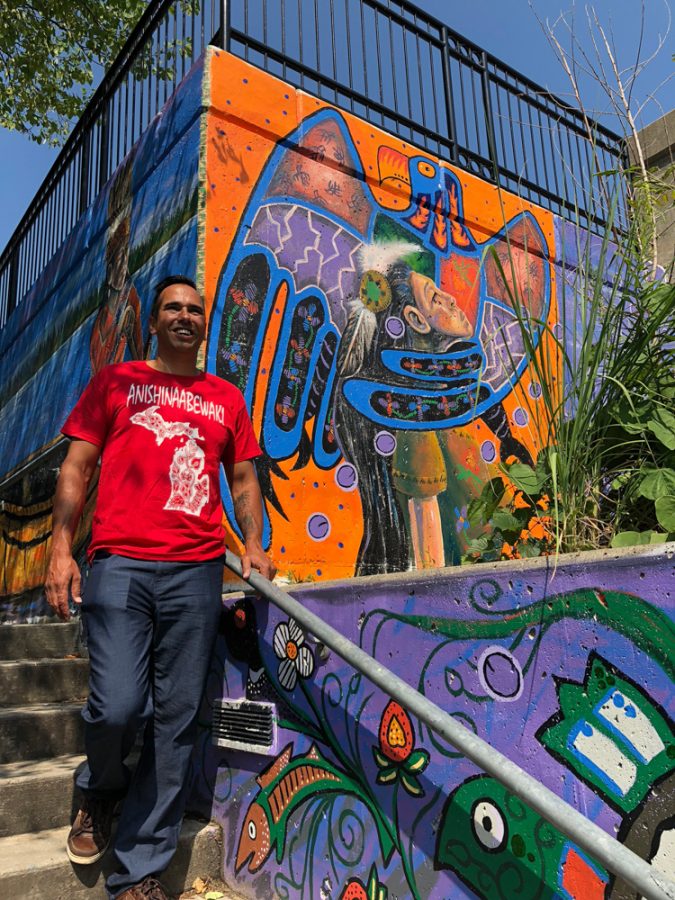Representing Anishinaabe culture in local art
Oct 11, 2021
Alan Compo from the Grand River Bands of Ottawa Indians grew up wishing there was more imagery from the Anishinaabe culture portrayed in local art. Now that he is a full-time artist, he uses the stories that he heard growing up to create vibrant pieces of artwork.
Oct. 11 is Indigenous Peoples’ Day which is a holiday that celebrates Native American culture and traditions. Compo has multiple pieces in the Grand Rapids area that commemorates the history of his tribe.
“Now that I’m able to do a lot of outside art and murals, I’d like to think that there’s some little Anishinaabe kid walking by and sees it and they’ll know that it came from another Anishinaabe,” Compo said.
Sharing Anishinaabe stories to the public is one of Compo’s main motivations for his art. He said he was lucky to grow up with grandparents who still shared stories and relates them to everyday happenings. There are some young Anishinaabek who have not been as lucky to have heard these stories.
“It’s cool to be able to take those stories and to be able to create them in my way or how I took them growing up and how I think of them now,” Compo said.
Compo has always gravitated toward art as he was surrounded by working art such as basket making his whole life. He was also exposed to painters and other native artists throughout the Michigan community that have inspired his work throughout his career. However, the older generations are not the only ones who inspire Compo
“There are so many younger artists coming up and I’m inspired by them and what they’re doing. Especially how they are taking new media and doing new things with it,” Compo said.
While he portrays traditional stories and themes, Compo refers to most of his work as contemporary. His work typically involves vibrant colors and imagery that draws the viewer in closer.
“A lot of the time I really like the bright colors because I feel like we are all bright people,” Compo said.
One of Compo’s most recent projects is his collaboration with Graffiti Wall GR and other Anishinaabek artists. This wall in the Creston Heights Neighborhood is a legal graffiti wall that allows the community to freely express themselves.
The wall was painted all orange to honor and remember the survivors and children who lost their lives in residential and boarding schools across Turtle Island. Compo led a group of collaborators who each contributed to the piece by bringing their own experiences and forms of expression. The orange wall is an example of a piece of community art, but Compo said he sees almost all of his murals as community pieces.
Compo considers his 2018 ArtPrize entry “Anishinaabek” his pride and joy. This mural, located on Pearl St. downtown Grand Rapids, is intentionally placed in a tunnel along the Grand River. This specific area was chosen because it is where the sacred plum orchards used to be.
The plum orchard was known as a women’s area as well as a place where ceremonies were held. This land was taken away from them when settlers came and burnt down the orchard, leaving them without a place for ceremonies and gathering.
Compo’s piece retells the history behind the plum orchards and the Anishinaabek women.
“To work with the city to help bring that idea back and that story back that a lot of people don’t even realize,” Compo said.
Compo’s mission is to spread the stories of his people throughout the community. His brightly colored murals and artwork can be found throughout the Grand Rapids area.






















